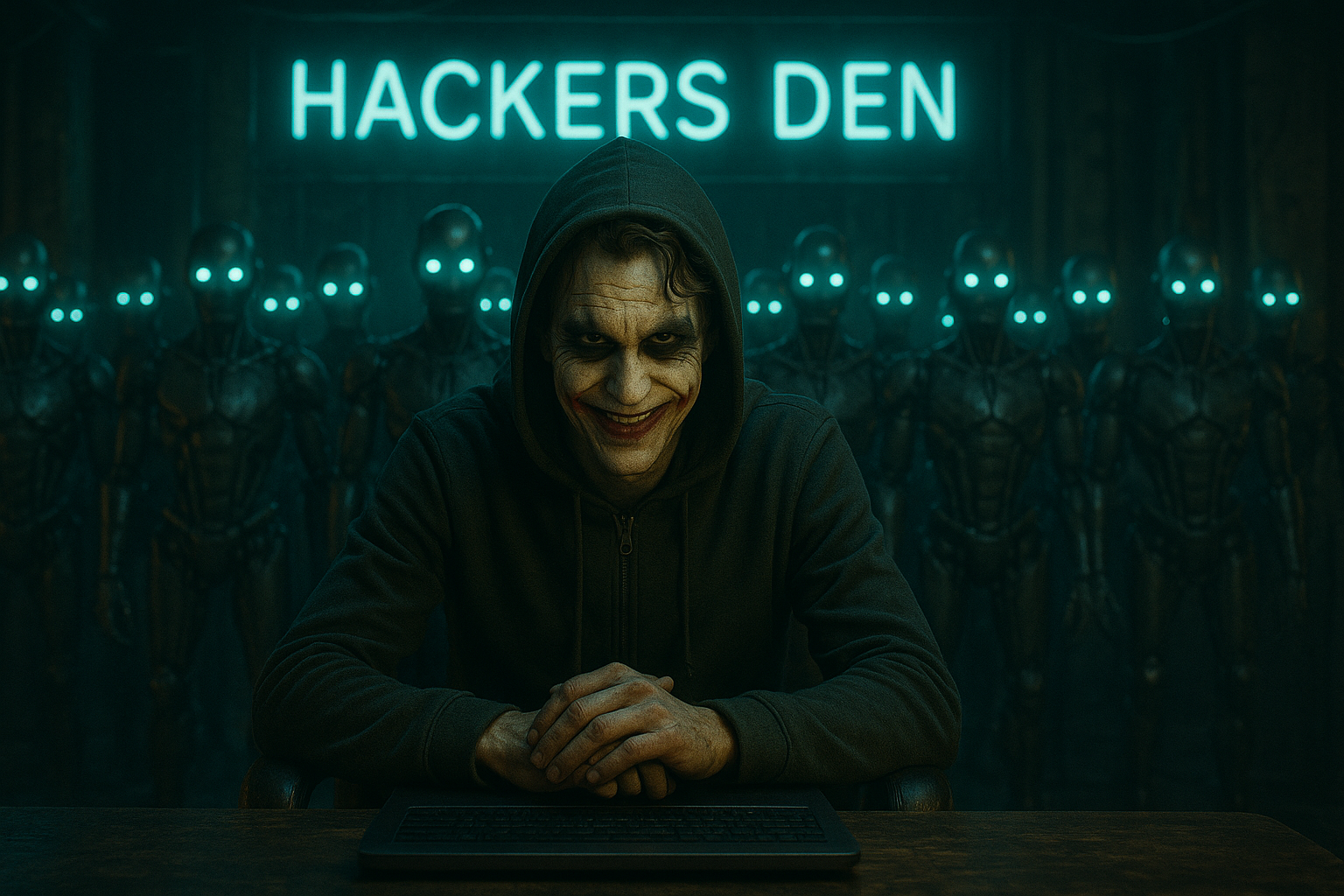
Artificial Intelligence has long been celebrated for driving innovation, efficiency, and productivity across industries. But alongside the positives, a darker reality is emerging: AI is increasingly being weaponized for cybercrime. The recent rise of Hexstrike-AI, an AI-driven hacking tool capable of exploiting zero-day vulnerabilities in under ten minutes, has sent shockwaves across the global cybersecurity community.
This blog explores how tools like Hexstrike-AI are changing the rules of the game, what it means for organizations worldwide, and how defenders can fight back.
—
What is Hexstrike-AI?
Hexstrike-AI was originally designed as a red-team tool—a legitimate system for penetration testers to stress-test enterprise networks. It functions by combining over 150 specialized AI agents that can coordinate reconnaissance, vulnerability scanning, exploit generation, and lateral movement. In simple terms, it’s like giving hackers an automated, AI-driven army that operates at lightning speed.
The tool leverages large language models such as GPT and Claude to orchestrate cybersecurity tasks that once required highly skilled humans. While red-team exercises are crucial for identifying weaknesses, Hexstrike-AI quickly found its way into darker corners of the internet. Cybercriminals began adapting it for malicious purposes, turning a defensive instrument into a powerful offensive weapon.
—
Exploiting Citrix Zero-Days in Record Time
The urgency surrounding Hexstrike-AI was amplified when researchers observed it being used to exploit three new Citrix NetScaler vulnerabilities: CVE-2025-7775, CVE-2025-7776, and CVE-2025-8424. Normally, hackers take days or weeks to reverse-engineer a patch, understand the weakness, and develop a working exploit.
With Hexstrike-AI, that timeline collapsed to less than ten minutes. Once details of the vulnerabilities were publicly disclosed, attackers were able to automate the exploitation process almost instantly. This drastically reduces the reaction time available to defenders and highlights a major shift in the cybersecurity landscape.
—
Why Zero-Day Exploitation is Dangerous
A zero-day vulnerability refers to a software flaw that is unknown to the vendor and, therefore, unpatched. Because no fix exists, attackers exploiting zero-days enjoy a unique advantage: they can infiltrate systems with little chance of detection or prevention.
In the past, finding and weaponizing a zero-day required significant expertise and resources, often limited to elite hackers or state-sponsored groups. AI tools like Hexstrike-AI democratize this capability, allowing less skilled actors to launch sophisticated attacks.
This shift threatens not just big corporations but also governments, healthcare providers, small businesses, and even individuals who rely on vulnerable infrastructure.
—
The Cybersecurity Arms Race
The emergence of AI-powered hacking is accelerating an arms race between attackers and defenders. On one side, malicious actors are leveraging AI to automate reconnaissance, exploit development, and even social engineering. On the other, cybersecurity teams must adopt equally advanced AI systems to detect and counter these threats.
This dynamic mirrors what has already played out in other industries: once AI becomes accessible, it fundamentally changes the speed, scale, and sophistication of the game. Cybersecurity is no exception.
—
Defensive Measures in the Age of AI Attacks
Organizations cannot afford to rely on traditional patching cycles and manual monitoring. Here are the key defensive strategies highlighted by experts:
1. Patch Management Must Be Immediate
Vendors like Citrix often release security updates within days of identifying critical vulnerabilities. However, many organizations delay applying these patches due to operational complexities. In the new era of AI exploitation, delays can mean disaster. Instant patching is now a business survival requirement.
2. AI-Driven Defense Systems
Just as attackers use AI, defenders must adopt machine learning models for anomaly detection, real-time intrusion monitoring, and automated response. Static firewalls and signature-based antivirus tools are no longer enough.
3. Continuous Threat Intelligence
Monitoring dark-web chatter, underground forums, and AI-powered attack tools can give security teams an early warning system. Threat intelligence platforms that integrate human analysts with AI models will be essential.
4. Red Team and Blue Team Exercises
Organizations should run frequent simulations, ideally powered by AI themselves, to evaluate how quickly vulnerabilities can be exploited. This helps teams build resilience and improve incident response speed.
5. Zero Trust Architecture
The “trust but verify” mindset is obsolete. Zero Trust ensures that every request—internal or external—is verified, authenticated, and monitored. This significantly reduces the impact of successful intrusions.
—
Broader Implications for Businesses
The rapid weaponization of Hexstrike-AI is more than a technical challenge; it’s a business and societal issue. Consider these implications:
Reputational Damage: A single AI-accelerated breach can compromise millions of records, causing irreversible trust loss.
Regulatory Pressure: Governments are likely to tighten cybersecurity compliance, forcing organizations to prove proactive defense.
Cost of Breaches: With faster exploitation, the financial impact of breaches will soar, including ransom payments, legal liabilities, and recovery costs.
Skill Gaps: Security teams already face shortages of qualified experts. The addition of AI-driven threats widens the skills gap even further.
—
The Role of Governments and Policy
Beyond enterprises, governments must step up to address the risks. Policy interventions could include:
Regulating Dual-Use Tools: Striking a balance between enabling red-team research and preventing abuse.
AI Safety Standards: Creating frameworks for ethical AI development in cybersecurity.
Global Cooperation: Cybercrime does not respect borders; international agreements will be critical in managing AI-powered threats.
Incentives for Faster Patching: Subsidies, compliance credits, or penalties may drive businesses to shorten their patch cycles.
—
Ethical Dilemmas of AI in Cybersecurity
The case of Hexstrike-AI raises uncomfortable ethical questions. Should powerful AI red-team tools be open-sourced if they can so easily be repurposed by criminals? Is restricting access to such tools realistic, or will bad actors always find a way?
Furthermore, if AI can automate hacking, could it eventually outpace even the most advanced defensive AI? These questions remain unanswered, but the cybersecurity community must grapple with them sooner rather than later.
—
Looking Ahead: The Future of Cybersecurity
The rise of Hexstrike-AI is not an isolated incident but a preview of what’s to come. AI hacking is no longer theoretical—it’s operational. Moving forward, organizations will need to embrace a mindset of continuous adaptation.
Key trends to expect:
More AI-Driven Exploits: Tools similar to Hexstrike-AI will proliferate.
Automated Defensive Ecosystems: Companies will deploy end-to-end AI systems capable of self-healing networks.
Cybersecurity Skills Evolution: Professionals must master both AI tools and traditional defense tactics.
Greater Public Awareness: As AI hacking headlines become frequent, businesses will face growing scrutiny from customers and regulators alike.
—
Conclusion
Hexstrike-AI symbolizes the dawn of a new cybersecurity era. With AI capable of exploiting zero-day vulnerabilities in minutes, the margin for human error is vanishing. Businesses and governments must move beyond traditional approaches and embrace AI-driven defenses, immediate patching, and proactive threat intelligence.
Cybersecurity has always been a race between attackers and defenders. But now, thanks to AI, that race has accelerated to hyper-speed. Those who fail to adapt will be left behind—while those who embrace resilience will survive and thrive in this new digital battlefield.




Leave a Reply